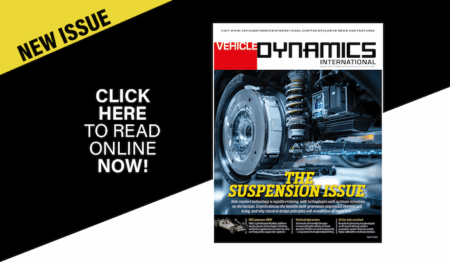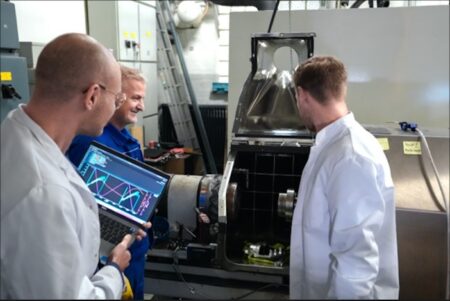Did you know that, in North America, aftermarket brake pads are not regulated, nor have any quality or metal standards to live up to? Consumers and automotive service retailers are unable to tell the difference between different grades of brake pads, and in today’s price-conscious economy, may simply choose the cheapest option.
As a safety item, it seems obvious that brake pads should have rigorous material quality and performance standards to meet or exceed. Yet in the United States and Canada, aftermarket brakes typically have no standards to meet. Original equipment (OEM) brakes have strict quality standards. But aftermarket brake pads do not.
Cheap imported aftermarket brakes, made from black steel and painted to look identical to those made from galvanized steel, are one of the biggest safety risks on the roads today. Imported from overseas and not treated, black steel aftermarket brakes have a scaly texture and are highly susceptible to rust jacking. The friction cannot adhere properly to a black steel backing plate. When the friction delaminates or breaks off from the backing plate, the result can be an increased stopping distance, or worse, the inability to stop at all. This can result in an accident, injury or death for the driver, their passengers and others on the road.
Even worse, overseas manufacturers of black steel brakes have little or no automotive background or experience. They are selling a critical safety item to retailers across the USA and Canada, who are unaware of the differences between brake pads, and trying to cut costs in a tight retail environment. Neither the mechanic nor the consumer has any way to measure quality or tell one brake pad from another. Consumers need to know what they are buying, especially when it comes to road safety.
Galvanized steel, which has undergone a pickling and oiling process removing surface impurities, supports the adherence of the friction to the backing plate, and the health of the entire brake system. Consumers need to choose galvanized steel brake pads to ensure their safety.
Since 2015, the Government of Ontario has been leading the way in global brake safety standards with a vehicle Inspection program and issuance of a Safety Standards Certificate. The purpose is to ensure all vehicles on the road meet a minimum safety standard when inspected, including for brake systems – one of a vehicle’s most important safety features, yet among the most overlooked factors. In the Passenger/Light-Duty Vehicle Inspection Standard Reference Handbook, section 3e lists pad condition factors that would meet a safety standard, and what would warrant a broken brake system. These factors include damage such as being contaminated, broken, cracked or abnormally worn; friction material loose or separating on the pad, or pad installed incorrectly; and signs of “rust-jacking” (friction material lifting due to rust build-up or friction material separating from backing material).
This progressive move has created some awareness, but the United States government needs to recognize the problem as well – and create a minimum safety standard as well.
Copper, which can dissipate heat quickly, was once widely used for brake pads, but was shown to generate microscopic particles, toxic to North American groundwater and the overall environment. As a result, California and Washington passed legislation that called for a gradual removal of copper and other heavy metals from brake pads by 2025. Brake manufacturers responded by promptly phasing out copper from brake pads, anticipating the legislation would pass across the nation. When copper content in brake pads was banned, it only took two states to ban it across the entire nation.
The same needs to happen for brake pad quality. To improve road safety for all, the time for aftermarket brake pad regulation is now.
According to the Global Brake Safety Council (GBSC), brakes are the most important safety device on a vehicle. The lack of safety standards in the North American aftermarket for brake pads has resulted in unethical and irresponsible manufacturing and sales of unsafe brake pads to the unknowing consumer. Many of these poorly made products come from China. This year, the US has levied on China over US$250 billion in tariffs on over 6,000 categories of imports. The future is uncertain for imported and exported goods; and there are few quality controls. Consumers need to know that their safest option is galvanized steel brake pads, made domestically with deep experience in the industry and decades of studying how to make the safest possible brake pads.
When it comes to brake pads, consumers and retailers deserve to know what they are buying. Galvanized steel is the only choice that has been tested and proven effective for brake pads to maintain their integrity, safety and maintain a short stopping distance.
The time for regulation of aftermarket brake pads is now. US and Canadian drivers deserve to know what they are buying and have the ability to protect themselves, their families, and all on the road. While we don’t know what will come of the US and China tariffs, safety will always be a priority. Let’s give a green light to industry change and aftermarket brake pad regulation to improve road safety for all.
About the author
Of his 20 year career in automotive industry, Mark Lavelle has spent the last 11 years focused on the braking industry, focused primarily on the OE sector. Mark has committed himself to ensuring that aftermarket brakes meet the safety standards mandated by the OEMs. He joined the GBSC to raise global awareness of the importance of brake safety.





